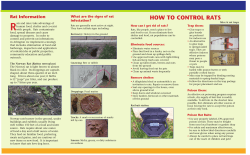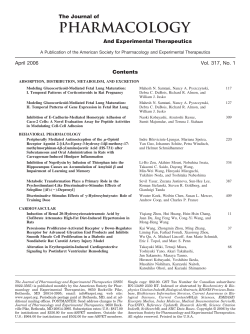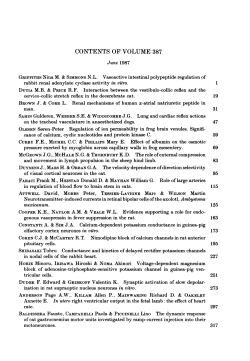
Greater Stick-Nest Rat (Leporillus conditor)
Greater Stick-Nest Rat (Leporillus conditor) Conservation Status NATIONAL: Vulnerable (Environment Protection and Biodiversity Conservation Act 1999) Description The Stick-Nest rat is a small rodent 220 mm long body, 170 mm long tail and weighing 350 grams. It has fluffy fur that is yellowish-brown to grey above and creamy white below. The tail is grey- brown above and whitish below. The tail is usually shorter than the head and body and has a slight terminal brush of hairs. The ears are large, rounded and dark, greyish-brown in colour. The hindfeet have distinctive white markings on the upper surface. The head is large and blunt with large eyes. Animals rest in a hunched posture like that of a rabbit. Unique communal nests are constructed from sticks, and sometimes stones, that are dragged to the site. The Centre is lined with grass or other soft material. The rats usually build the nest around a shrub, which eventually becomes part of the structure. Numerous tunnels lead from centre to the perimeter of the nest. Over time the nests can reach a size of up to 1 metre high and 1.5 metres in diameter. Communities of up to 20 animals live in the nests, safe from the dingoes and eagles that were once their major predators. Interestingly, the explorer Sturt recorded finding a Stick-Nest Rat’s nest under a Hawk’s nest. Habitat This species occupies semi-arid to arid habitats where there is little or no fresh water. It inhabits perennial shrublands, particularly with succulent and semi-succulent plant species. Distribution The Greater Stick-Nest Rat (the Lesser Stick-Nest Rat is extinct) was once widespread across the south-western and south-central Australia from Shark Bay as far as south western NSW. It is now extinct in the wild on mainland Australia, living in reasonable numbers only on offshore islands. Diet Unlike many native rodents, the greater stick-nest rat is not strictly nocturnal. It is herbivorous. On Franklin Island, they have been found to feed on the leaves and fruits of succulent plants such as pig-face (Carpobrotus rossii), nitre-bush (Nitraria schoberi) and some grasses. Breeding Pairs establish strong bonds, and individuals become aggressive to unfamiliar members. Breeding may occur at any time of year but there seems to be a peak in autumn and winter. The gestation period is about 44 days after which one to four young are born. The young attach themselves to the mothers’ teats for a month before they are weaned and become independent. Threats The introduction of sheep and cattle as well as foxes and cats had an immediate impact on both the animals and their nests, and they were rare by the middle of the 19th century. Recovery Plan Recovery strategies included captive breeding and translocation to mainland sites, predator control at release sites, and monitoring of all populations. FAME has supported the establishment of captive breeding colonies of Stick-Nest Rats in South Australia and NSW. The population of Stick-nest Rats at Arid Recovery in SA has thrived with over 250 rats now found in the reserve. References & More Information South Australian Department for Environment and Heritage 2009f. Threatened Species - The Recovery of the Greater Stick-nest Rat. http://www.environment.sa.gov.au/biodiversity/threatened-species/sticknestrat.html. Strahan R. (Ed) 1995. Mammals of Australia. The Australian Museum Trust. Reed New Holland, Australia. Western Australia Department of Environment and Conservation (WA DEC) (2010q). Fauna Species Profiles - Greater Stick-nest Rat (Wopilkara) Leporillus conditor (Sturt, 1848.) http://www.dec.wa.gov.au/content/view/3432/1999/1/4/. May-15 www.fame.org.au
© Copyright 2025





















